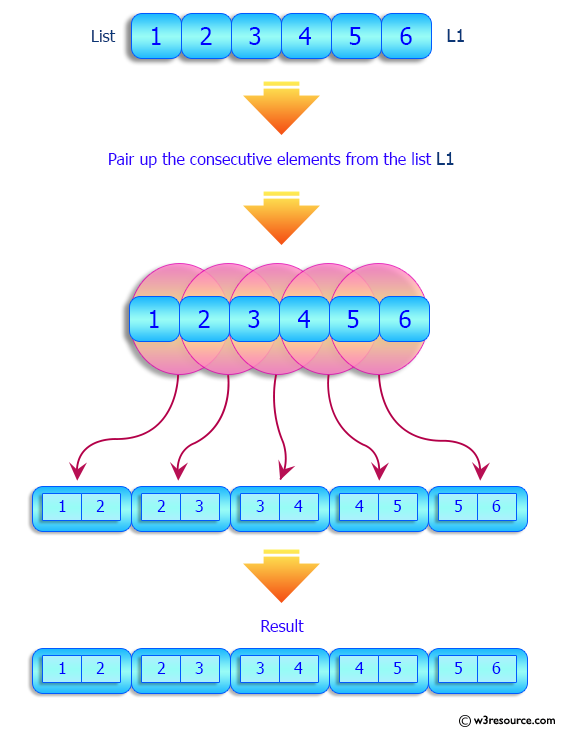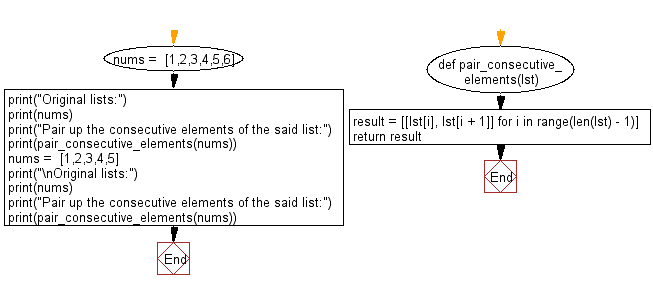Python: Pair up the consecutive elements of a given list
Pair Consecutive Elements in List
Write a Python program to pair consecutive elements of a given list.
Visual Presentation:

Sample Solution:
Python Code:
# Define a function 'pair_consecutive_elements' that pairs up consecutive elements in a list.
def pair_consecutive_elements(lst):
# Use a list comprehension to iterate over each index 'i' in the range up to the second-to-last index.
# For each 'i', create a sublist containing the elements at index 'i' and 'i + 1' in the original list.
result = [[lst[i], lst[i + 1]] for i in range(len(lst) - 1)]
return result
# Create a list 'nums' containing integers.
nums = [1, 2, 3, 4, 5, 6]
# Print a message indicating the original list.
print("Original lists:")
# Print the original list of integers.
print(nums)
# Print a message indicating the purpose of the following line of code.
print("Pair up the consecutive elements of the said list:")
# Call the 'pair_consecutive_elements' function to create pairs of consecutive elements in the list.
print(pair_consecutive_elements(nums))
# Create a list 'nums' containing integers.
nums = [1, 2, 3, 4, 5]
# Print a message indicating the original list.
print("\nOriginal lists:")
# Print the original list of integers.
print(nums)
# Print a message indicating the purpose of the following line of code.
print("Pair up the consecutive elements of the said list:")
# Call the 'pair_consecutive_elements' function to create pairs of consecutive elements in the list.
print(pair_consecutive_elements(nums))
Sample Output:
Original lists: [1, 2, 3, 4, 5, 6] Pair up the consecutive elements of the said list: [[1, 2], [2, 3], [3, 4], [4, 5], [5, 6]] Original lists: [1, 2, 3, 4, 5] Pair up the consecutive elements of the said list: [[1, 2], [2, 3], [3, 4], [4, 5]]
Flowchart:

For more Practice: Solve these Related Problems:
- Write a Python program to pair consecutive elements in a list and compute the sum of each pair.
- Write a Python program to pair consecutive elements in a list only if the first element is less than the second.
- Write a Python program to pair consecutive elements in a list and output the pairs as tuples.
- Write a Python program to pair every two consecutive elements in a list and then swap the order of each pair.
Go to:
Previous: Write a Python program to convert a given unicode list to a list contains strings.
Next: Write a Python program to check if a given string contains an element, which is present in a list
Python Code Editor:
What is the difficulty level of this exercise?
Test your Programming skills with w3resource's quiz.
